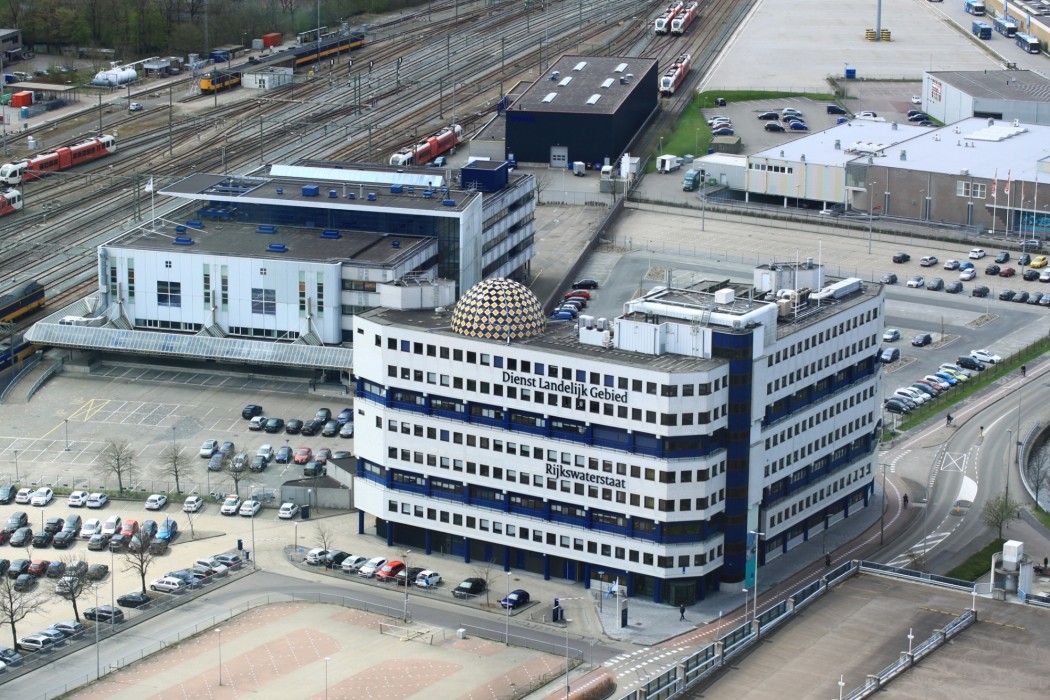SCULPTURE, SITE-SPECIFIC INSTALLATION
The Priority Dome is a permanent installation sited on the roof of Middelzeehuys, a government building in Leeuwarden. The building is home to the Dutch Ministry of Infrastructure and the Environment, as well as theGovernment Service for Land and Water Management. In addition to other tasks, these government departments are primarily responsible for the management of the road network and car traffic of the Netherlands.The sculpture is 11 m in diameter, 6 m high and weighs 8 tons. The surface of the dome consists of 250 (European) standard 'priority road' traffic signs.
The city of Leeuwarden has approximately 100,000 residents, and is the capital city of the northern Dutch province of Friesland. The office block accommodating the ministries was designed and realized by the architecture office Articon in the 1980's. Middelzeehuys, named after the middle sea, refers to Leeuwarden’s history as a port city.
A dome is an interesting architectural form that is easily recognized and seen on many representative buildings around the world. Besides its aesthetic appearance, the dome also has a powerful, invisible presence, connected to its role in social hierarchy. The round roof construction works as something of a physical lid on a political or spiritual force and authority. As in the case of a house of parliament or a church, these characteristics of power are often found throughout the whole building, but in a sky-reaching dome, it finds its most explicit expression.
The Priority Dome, with its architectural form made of abstract traffic signs, blends well with the functional eighties style of the office building. Further connecting the dome with its surroundings, the same traffic signs, which make up the dome’s structure can be also found on the street alongside the building (because it is located on a priority road). Despite this, there remains a subtle, strange friction between the lack of charisma of the office building and the meaning of the dome as a carrier of invisible power. This impression is reinforced by the peculiar shiny yellow pattern of the construction that could easily be associated with the gilded domes of mosques or synagogues. In this way the project not only changes the character of the whole office building, it also finds a playful way to express the authority of the involved ministries within their own domain.
The Priority Dome was realized in 2012 as a commission on behalf of the Dutch Government Buildings Agency. This institution is part of the Ministry of Interior and Kingdom Relations.
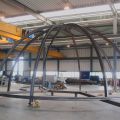
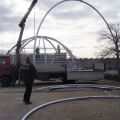

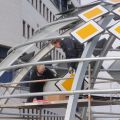
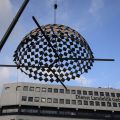

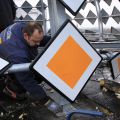
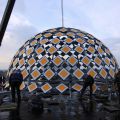
photograpy Helmut Dick
